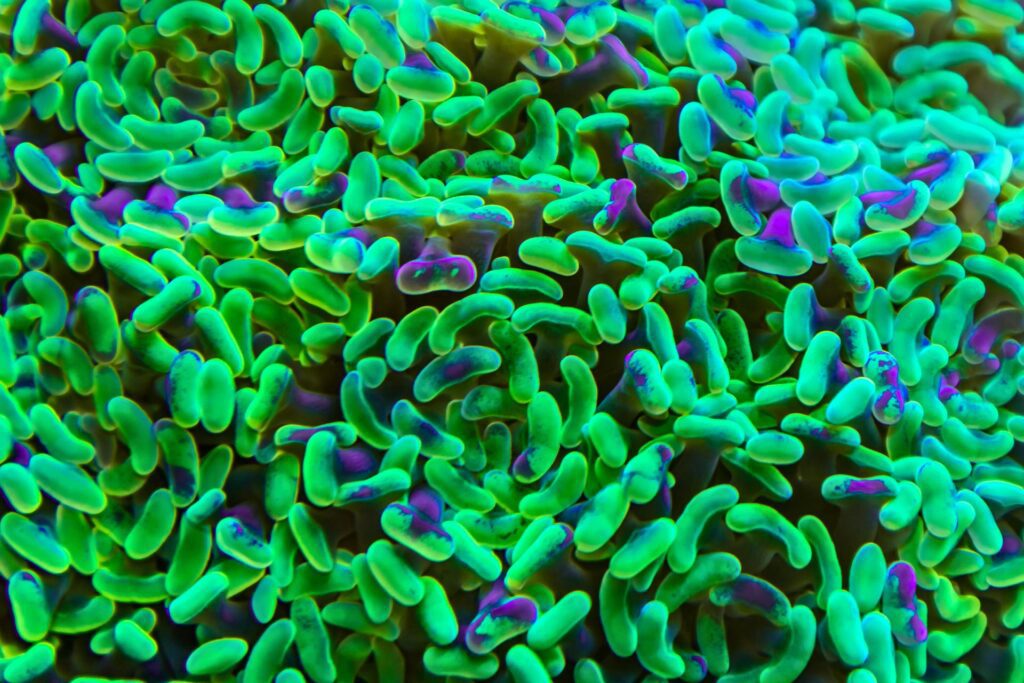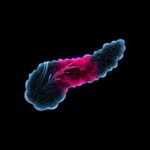The term probiotics defines live microorganisms that confer a health benefit to the host when administered in adequate amounts, and the application of a living microbe to humans has primarily involved oral intake in foods.
The genus Lactobacillus, a group of Gram-positive bacteria, includes more than 200 species found in diverse ecosystems, including the human body and fermented dairy products.
Some lactobacilli species, including Lactobacillus rhamnosus, are potential probiotics as they can maintain gut homeostasis and relieve dysbiosis-related diseases.
Lactobacillus rhamnosus CRL 1505 was isolated from goat milk and its genome has been published by M.P. Taranto and colleagues in 2013.1
CRL 1505 is one of the most studied and characterized probiotic strains as it can provide numerous beneficial effects, as seen in preclinical models and in humans with special regard to respiratory and intestinal infections.
Lactobacillus rhamnosus benefits to the immune system
Since one decade ago the benefits of L. rhamnosus administration have been studied in mouse models. Lactobacillus rhamnosus CRL 1505 was able to induce the immune response against the infection by an intestinal pathogen (Salmonella typhimurium) and a respiratory pathogen (Streptococcus pneumoniae).1 Importantly, CRL 1505 significantly decreased the number of S. pneumoniae in the lung, prevented its dissemination into the blood, and induced a significant increase of anti-inflammatory mediators.2
Mice fed with a protein-free diet for 21 days as a model of immunosuppression and malnourishment, displayed normalization of leukocytes, neutrophils, and lymphocytes in blood after receiving fermented goat milk containing L. rhamnosus CRL 1505. In this work, CRL 1505 was selected at the optimal dose able to improve protection against S. pneumoniae and S. typhimurium, showing that CRL1505 can bring benefits to the mucosal immune system and improve defenses against respiratory and intestinal infections.3
Salva S. and colleagues further investigated on the effect of probiotics on the recovery of immune system after a malnutrition state. They reported that impaired B cell development in the bone marrow, induced by protein malnutrition in mice, was reverted by supplement repletion diet with fermented goat milk containing Lactobacillus rhamnosus CRL 1505. These results added additional information on the ability of CRL 1505 to recover lymphopoiesis in immunocompromised-malnourished hosts4. However, the researchers pointed out that the effects of the repletion diet could depend not only on L. rhamnosus, but also on non-bacterial components such as bioactive peptides present in goat milk.4
L. rhamnosus and viral respiratory infections
An experimental mouse model of lung inflammation based on the nasal administration of a synthetic molecular pattern associated with viral infections poly(I:C), demonstrates that L. rhamnosus CRL 1505 could serve as a valuable prophylactic agent to control respiratory viral infection4. In particular, the preventive administration of CRL 1505 reduced lung injuries and regulated the production of antiviral cytokines. Moreover, L. rhamnosus CRL1505 induced the mobilization of dendritic cells to the lungs of mice challenged with the viral infection.5
Another study using the same animal model revealed that L. rhamnosus can modulate the production of proinflammatory and anti-inflammatory cytokines and reduce coagulation activation, downregulating the expression of tissue factor (TF) and thrombomodulin in the lung.6 These results also point out a crucial role for IL-10 in the immune protection mediated by L. rhamnosus CRL 1505 during respiratory viral infections and report how CRL 1505 can influence the lung immune-coagulative reaction triggered by Toll-like receptor 3 (TLR3) activation induced by intranasal administration of poly(I:C).
Moreover, in this work mice were orally treated with Lactobacillus rhamnosus CRL 1505, intraperitoneally injected with anti-IL-10 receptor (IL-10R) antibodies, and then challenged with respiratory syncytial virus (RSV) or influenza virus (IFV). The researchers showed that blocking IL-10R impaired the ability of CRL 1505 treatment to reduce activation of coagulation in mice infected with IFV or RSV, describing a crucial role for IL-10 in the immune protection mediated by CRL 1505.
In a review from 2014, the role of TLR3-mediated inflammatory damage in the lungs and the interplay with CRL 1505 have been discussed.7 Given that TLR3 is known to have a complex role in viral infections and in modulating the immune response to pathogens, the researchers pointed out their findings on how IL-10 was increased in L. rhamnosus CRL 1505-treated mice. They propose that IL-10 would be valuable for attenuating TLR3-mediated inflammatory damage in the lungs, therefore CRL1505 treatment could be used to beneficially modulate the balance between pro- and anti-inflammatory cytokines, allowing a reduction of lung tissue damage through effective regulation of the inflammatory response.
It has been shown that L. rhamnosus CRL 1505 significantly reduces lung viral loads and tissue injuries in mice after a challenge with respiratory syncytial virus (RSV), a pneumovirus in the family of the Paramyxoviridae that infects nearly all children within the first 3 years of life and can cause bronchiolitis and viral pneumonia. Moreover, CRL 1505 stimulated the secretion of anti-inflammatory cytokines (IFN-γ and IL-10) and the activation of dendritic cells (CD103+ CD11bhigh) bringing protective effects against the damaging immune reactions associated with RSV infection.8
A study by Tomosada and colleagues further demonstrated that L. rhamnosus CRL 1505 can beneficially modulate the activation of the immune response triggered by RSV. Moreover, this work shows that heat-killed L. rhamnosus CRL 1505 was, as well as the viable bacteria, able to modulate the respiratory defenses against RSV.9
The benefits of L. rhamnosus have been also studied in a swine in vitro model, because of the similarities between the swine and human immune system.10 Villena and colleagues used porcine Peyer’s Patches (PPs), lymphoid follicles similar to lymph nodes located in the intestinal mucosa, to investigate how to prevent viral diarrhea episodes. They showed that two different strains of L. rhamnosus (including CRL 1505) are capable to induce antiviral defense responses in intestinal epithelial cells, modulating innate immunity and inducing antiviral IFNs, IFN-γ and anti-inflammatory IL-109, when stimulated with poly(I:C).
L. rhamnosus and aging
Investigations on the beneficial effects of Lactobacillus rhamnosus CRL 1505 have not been limited to infectious disease. The benefits of CRL 1505 administration have been also investigated in aged mice, subjected to natural immunological alterations occurring during aging.
In this work, CRL 1505 was able to improve peritoneal macrophages phagocytic activity, and the number of intestinal IgA+ cells, reaching values of those parameters similar to young adult mice. The immune modulation of aging-induced by CRL 1505 could be useful to tailor specific food supplements for the elderly population.11
Beneficial effects of L. rhamnosus in humans
The effects of L. rhamnosus CRL 1505 in humans have been investigated in a randomized-controlled double-blind clinical trial involving 298 healthy children from 2 to 5 years old. Researchers have designed a Yogurt containing CRL 1505 that was administered to children for 6 months, for five times a week. The control group received a yogurt without probiotics. In this study, the researchers found that:
The yogurt containing L. rhamnosus CRL 1505 displayed the ability to stimulate the mucosal immune response, associated with increased levels of mucosal IgA antibodies 12, and it was able to prevent and reduce respiratory infections, pharyngitis, tonsillitis and intestinal infections.13
In particular, the administration of CRL 1505 to young children reduced the incidence of infections: 66% of children in the placebo group presented symptoms of infection, while only 34% of cases were detected in the CRL 1505 group.
Also, there were significant differences in the incidence of intestinal infections, upper respiratory tract infections, and angina between placebo and CRL 1505 children group.
Moreover, children who received CRL 1505 experienced fewer fever and acute diarrhea episodes, and needed fewer antibiotics than those receiving the placebo.
Conclusions
Numerous in vivo and in vitro studies support the beneficial role of Lactobacillus rhamnosus CRL 1505 in counteracting and modulating inflammation mediated by common pathogens. CRL 1505 can modulate the immune system in immunocompromised mice, activating mucosal immunity and stimulating the secretion of anti-inflammatory cytokines. Benefits of L. rhamnosus were further confirmed in a swine in vitro model and in aged mice, broadening its usage to age-related immune dysfunctions.
Studies on humans describe and confirm a protective role of CRL 1505 in human infectious disease. As recent findings suggest that 21% of global deaths in children younger than 5 years of age are attributable to malnutrition and infectious diseases 6,13, probiotics usage may help to prevent and to reduce the burden of common childhood morbidities12. Lactobacillus rhamnosus strain CRL 1505 has been included in the official Nutritional Programs in Argentina.
«Although trials testing CRL1505 on human adults have not been carried out yet, its mechanism of action has been well described. It is plausible to assume that anti-inflammatory properties and beneficial effects of CRL 1505 to the immune system, observed in children, could benefit humans at all ages» said Marco Caspani, CEO of Centro Sperimentale del Latte srl.
This project was made possible thanks to an unconditional grant of CSL Centro Sperimentale del Latte – A company of Sacco System.
References
- Taranto MP, Villena J, Salva S, et al. Draft genome sequence of Lactobacillus rhamnosus CRL1505, an immunobiotic strain used in social food programs in Argentina. Genome Announc. 2013;1(4). doi:10.1128/genomeA.00627-13
- Salva S, Villena J, Alvarez S. Immunomodulatory activity of Lactobacillus rhamnosus strains isolated from goat milk: Impact on intestinal and respiratory infections. Int J Food Microbiol. 2010;141(1-2):82-89. doi:10.1016/j.ijfoodmicro.2010.03.013
- Salva S, Nuñez M, Villena J, Ramón A, Font G, Alvarez S. Development of a fermented goats’ milk containing Lactobacillus rhamnosus: In vivo study of health benefits. J Sci Food Agric. 2011;91(13):2355-2362. doi:10.1002/jsfa.4467
- Salva S, Merino MC, Agüero G, Gruppi A, Alvarez S. Dietary Supplementation with Probiotics Improves Hematopoiesis in Malnourished Mice. Ansari AA, ed. PLoS One. 2012;7(2):e31171. doi:10.1371/journal.pone.0031171
- Villena J, Chiba E, Tomosada Y, et al. Orally administered Lactobacillus rhamnosus modulates the respiratory immune response triggered by the viral pathogen-associated molecular pattern poly(I:C). BMC Immunol. 2012;13. doi:10.1186/1471-2172-13-53
- Zelaya H, Tsukida K, Chiba E, et al. Immunobiotic lactobacilli reduce viral-associated pulmonary damage through the modulation of inflammation-coagulation interactions. Int Immunopharmacol. 2014;19(1):161-173. doi:10.1016/j.intimp.2013.12.020
- Kitazawa H, Villena J. Modulation of respiratory TLR3-anti-viral response by probiotic microorganisms: Lessons learned from Lactobacillus rhamnosus CRL1505. Front Immunol. 2014;5(MAY). doi:10.3389/fimmu.2014.00201
- Chiba E, Tomosada Y, Vizoso-Pinto MG, et al. Immunobiotic Lactobacillus rhamnosus improves resistance of infant mice against respiratory syncytial virus infection. Int Immunopharmacol. 2013;17(2):373-382. doi:10.1016/j.intimp.2013.06.024
- Tomosada Y, Chiba E, Zelaya H, et al. Nasally administered Lactobacillus rhamnosus strains differentially modulate respiratory antiviral immune responses and induce protection against respiratory syncytial virus infection. BMC Immunol. 2013;14(1). doi:10.1186/1471-2172-14-40
- Villena J, Chiba E, Vizoso-Pinto MG, et al. Immunobiotic Lactobacillus rhamnosus strains differentially modulate antiviral immune response in porcine intestinal epithelial and antigen presenting cells. BMC Microbiol. 2014;14(1). doi:10.1186/1471-2180-14-126
- Molina V, Médici M, Villena J, Font G, Pía Taranto M. Dietary Supplementation with Probiotic Strain Improves Immune-Health in Aged Mice. Open J Immunol. 2016;06(03):73-78. doi:10.4236/oji.2016.63008
- Villena J, Salva S, Núñez M, et al. Probiotics for everyone! The novel immunobiotic lactobacillus rhamnosus CRL1505 and the beginning of social probiotic programs in Argentina. International Journal of Biotechnology for Wellness Industries. doi:2012, 1, 189-198
- Villena J, Salva S, Núñez M, et al. Beneficial lactobacilli for improving respiratory defenses: The case of lactobacillus rhamnosus CRL1505. chapter.










